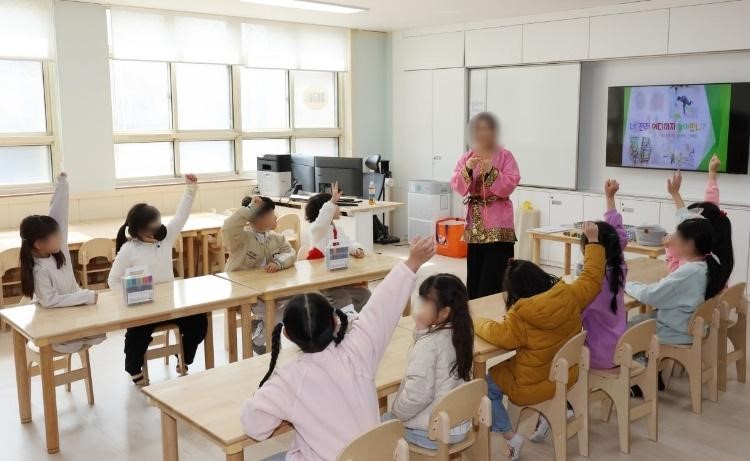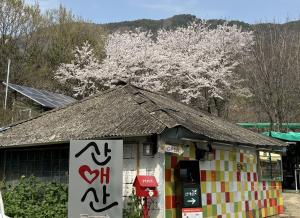 |
| ▲ Neulbom School was operated at Gaeun Elementary School in Ulsan on March 4 (Source: Yonhap News) |
Since March 4, ‘Neulbom School,’ was officially implemented for first- grade elementary students in 2,741 elementary schools nationwide. ‘Neulbom School’ is a system that provides free education and after school care to elementary school students who wish to attend from 7 a.m. to 8 p.m. This semester, it was implemented in 2,741 elementary schools, and from next semester, it will be implemented in 6,175 elementary schools nationwide. The current president said, “In the second half of this year, this system will be implemented for the first grade of elementary school, and by next year, it will extend up to the second grade. From 2026, it will be smoothly implemented in all grades of elementary school."
‘Neulbom School’ is a concept that combines the existing, ‘care class,’ and ‘after- school program,’ and means, ‘a school that is always warm like spring.’ This system was introduced by the government to overcome the problem of low birth rates, aiming to reduce the burden of childcare for parents and the phenomenon of avoiding birth. In addition, the system seeks to help students adapt to school and reduce the demand for private education. The system not only cares for elementary school students, but also offers a variety of programs. If the existing care class and after- school program are in high demand and in short supply depending on the region, elementary school students had to be selected based on specific priorities, such as low- income groups or dual- income couples. As a result, the number of students waiting for after school and care classes last year reached about 15,000, and those who were not selected had to attend private academies. Furthermore, the existing after school and care classes only operated from 1 p.m. to 5 p.m. (extended to 7 p.m. depending on demand). However, ‘Neulbom School,’ allows parents to apply for care classes and after school, as well as education, without any priority criteria. Neulbom School operates from 7 a.m. (before regular class) to 8 p.m. (after regular class), and dinner is free if parents use night care between 5 p.m. and 8 p.m.
However, despite the good intentions and methods of Neulbom school, there are problems in the operation process. In order to reduce the workload burden on teachers, the government has decided to hire temporary teachers during the operation period of Neulbom School. Some regions are having difficulty recruiting temporary teachers. In particular, recruiting temporary teachers is more difficult in areas with declining populations or rural communities. As of the day before the start of school, Gangwon- do was unable to hire temporary teachers in 4 out of 84 elementary schools that operate Neulbom schools, and Jeju- do was unable to hire temporary teachers in 10 out of 55 cases. If temporary teachers cannot be hired, then existing teachers will be in charge of the Neulbom School work, causing problems of being overworked, which could lead to burnout.
In addition, the number of elementary schools that operate Neulbom School and the participation rate in Neulbom School vary greatly depending on the region. Excluding Busan (304 schools, 100%), Jeollanam- do (425 schools, 100%), and Gyeonggi- do (975 schools, 73.3%), the participation rate in the remaining regions is less than half. In particular, in Seoul, the number of elementary schools operating Neulbom School is 38, with the participation rate of 6.3%. The participation rates in Jeollabuk- do (75 schools, 17.9%) and Ulsan (24 schools, 19.8%) did not exceed 20%, while those in Gwangju (32 schools, 20.6%), Incheon (60 schools, 22.9%), Gangwon- do (84 schools, 24.1%), and Chungcheongnam- do (118 schools, 28.6%) did not exceed 30%. The number and participation rate of Neulbom School in the remaining regions are Jeju- do (55 schools, 48.2%), Sejong (25 schools, 47.2%), Chungcheongbuk- do (100 schools, 39.2%), Gyeongsangbuk- do (152 schools, 32.1%), and Gyeongsangnam- do (159 schools, 32.1%). 31.3%), Daegu (70 schools, 30.2%), and Daejeon (45 schools, 30.2%).
According to the Neulbom School demand survey conducted by the Ministry of Education in January, among parents of first- grade elementary school students (about 340,000 people), 44,035 parents, 83.6% of 52,655 parents who participated in the survey responded that they would like to participate in Neulbom School. Despite the expectations of these parents, the reality is that Neulbom School is facing difficulties in its operation. Because there are elementary schools where excessive workload burden on teachers occurs due to Neulbom School, the recruitment of temporary teachers should be done as soon as possible. Furthermore, the participation rate at Neulbom School currently varies greatly depending on the region. It is important to increase the participation rate of elementary schools because parents who send their children to elementary schools that do not implement Neulbom School have a heavy burden of childcare.
By Son Yu-jeong, cub-reporter ujeong0202@naver.com






